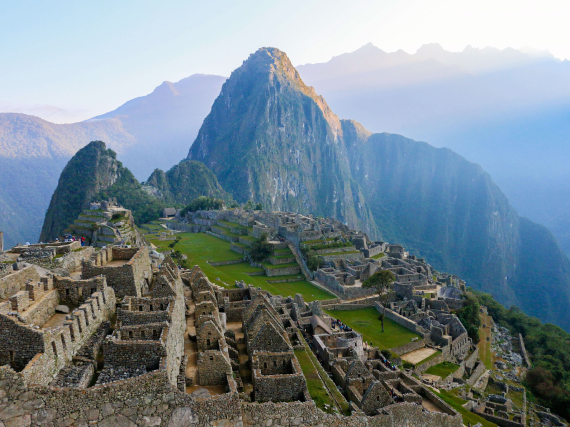Between paving runways and erecting terminals that can handle millions of passengers annually, some airports cost a fortune to build. These multibillion-dollar transit hubs contain an endless array of boarding gates, parking structures, baggage carousels, concessions, lounges, and other features, all of which contribute to their hefty construction costs. As of early 2025, the $34.8 billion USD expansion of Al Maktoum International Airport in Dubai is anticipated to become the world’s costliest airport when complete. But in terms of airports that are already built, here are five of the world’s most expensive airports ever constructed.
5. Denver International Airport – Denver, Colorado
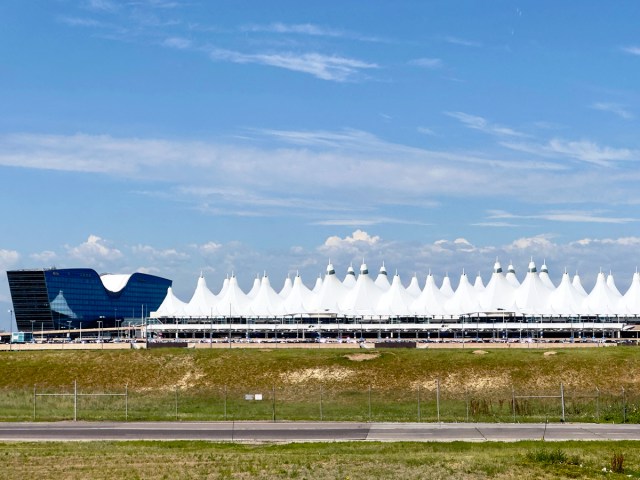
Estimated construction cost: $4.8 billion
Denver International Airport opened in 1995 after years of delays, which contributed to its exorbitant $4.8 billion price tag — around $2 billion over budget. In the end, DIA — as it’s nicknamed — totaled $3 billion in construction costs alone, plus $1.8 billion in related projects (equivalent to about $9 billion total today).
DIA’s high price tag was due in part to the project’s overall complexity, which included six underground tunnels and the Jeppesen Terminal, with its intricate roof resembling the snow-capped peaks of the Rockies. The airport — built to replace Denver’s Stapleton Airport, which had run out of room to expand — was also expensive because of its sheer size. It covers 53 square miles of land, making it the largest airport in the U.S. by total land area — larger than the city of Boston, Miami, or San Francisco.
4. Berlin Brandenburg Airport – Berlin, Germany

Estimated construction cost: $6.6 billion
Due to decades of mismanagement and delays, the final cost of construction for Berlin’s Brandenburg Airport ended up being around three times more expensive than initially intended, which prompted some to declare it the “laughing stock” of Germany.
Planning for the airport began in 1992, a year after the reunification of Germany. However, construction didn’t begin until 2006, and it wasn’t until 2020 that the airport finally opened, 10 years behind schedule. Construction costs skyrocketed thanks to a series of design missteps and faulty features.
Take, for example, the airport’s fire protection system, which failed to function properly and had to be replaced. Other costly mistakes included building escalators that were originally too short and not having enough baggage carousels. All of these delays added up, making Berlin Brandenburg Airport one of the costliest airports in aviation history.
3. Kansai International Airport – Osaka, Japan
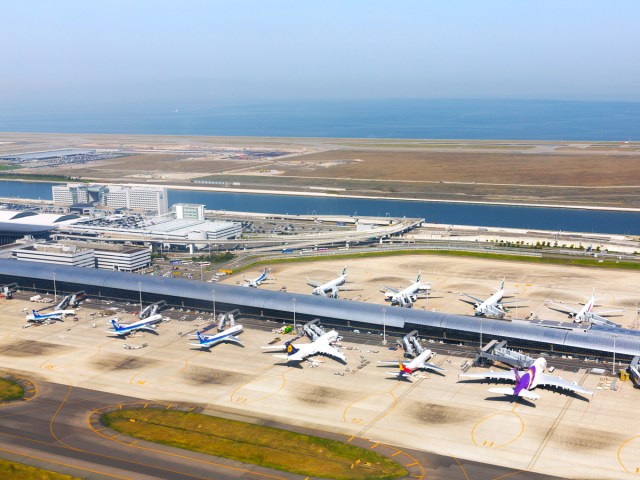
Estimated construction cost: $14.4 billion
Kansai International Airport was constructed to alleviate pressure on Osaka International Airport and to generate economic growth in the region. The airport was initially proposed in the 1960s, though it was initially met with backlash, as protesters worried about how it would affect the local residential population. But after decades of back and forth, work finally began on the airport in 1987.
One of the biggest challenges of creating Kansai International Airport was the decision to build it atop a new 2.5-by-1.6-mile artificial island in Osaka Bay instead of atop existing land. Engineers had to protect the island from natural disasters like earthquakes and typhoons, and those efforts added to the overall cost.
In order to reach the construction site, teams built a 1.86-mile-long bridge connecting the airport to the mainland, which was another expensive endeavor. A significant portion of funds also went toward the main terminal, which was designed by Italian architect Renzo Piano — the genius behind other iconic buildings including the Shard in London.
After opening in 1994, Kansai International Airport became the sole arrival and departure point for all international flights to and from Osaka. This rendered Osaka International Airport as a facility for domestic flights only, despite its name.
2. Beijing Daxing International Airport – Beijing, China
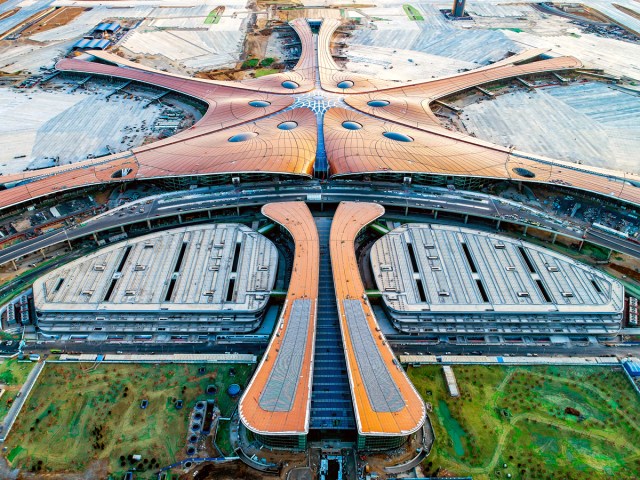
Estimated construction cost: $17 billion
The newer of two international airports serving the capital city of China, Beijing Daxing International Airport cost an estimated $17 billion to construct. But when you factor in all the new transportation links that were built in conjunction with the airport, the total cost balloons to around $63 billion, thus making it the most expensive airport in the world by certain metrics.
Construction began in 2014, and Daxing opened to the public in September 2019. The airport was built on 6,620 acres roughly 28 miles south of Beijing and contains four civilian runways, plus a single military runway.
But the most unique — and costly — element of the hub is its terminal design. There are six arms emanating from a central building, which symbolically represent the shape of a phoenix extending its wings. On the arms you’ll find a series of double-deck departure and arrival platforms, which are the first such platforms of their kind ever built, allowing for more flights to arrive and depart simultaneously.
1. Hong Kong International Airport – Hong Kong
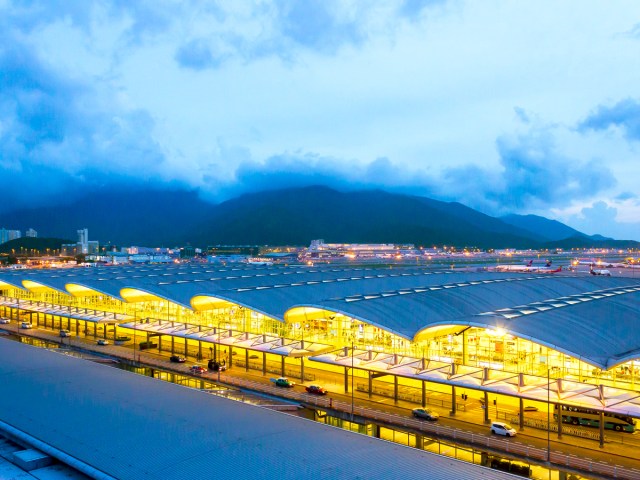
Estimated construction cost: $20 billion
The world’s most expensive airport, according to Guinness World Records, is Hong Kong International Airport, which is located on the island of Chek Lap Kok.
Construction on this megaproject began in 1991, and $20 billion later, the airport finally opened on July 6, 1998. A sizable part of the budget went toward reclaiming the land on which the airport was built; prior to this, the island mainly contained small farming and fishing villages and was unsuitable for such a massive project.
Other major costs included the construction of four tunnels, five bridges, and an adjacent town designed for 260,000 inhabitants, all of which made the airport more accessible. In total, $11 billion of the total cost went toward these features that connected the airport to the rest of Hong Kong, whereas $9 billion went toward building the actual airport.
One of the costliest features of Hong Kong International Airport was SuperTerminal 1, which is the world’s largest single cargo terminal and cost $1 billion to build. This massive cargo space is capable of handling more than 2.5 million tons of cargo each year, which is approximately 2.5 times as much as London’s Heathrow Airport.
More from our network
Daily Passport is part of Inbox Studio, which publishes content that uplifts, informs, and inspires.

